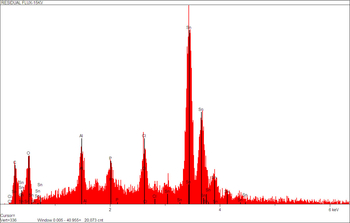Tin- Copper Alloys for Lead-free Reflow?
Some suppliers are promoting their patented Sn-Cu (tin-copper, melting point 228C) lead free alloys with trace amounts of magic metals like Ni (nickel) and germanium (Ge) as a replacement for SAC 305 which has a melting point closer to 220C (solidus temperature of 217C and liquidus temperature of 220C. For SAC alloys, liquidus temperatures can be as high as 250C but the solidus temperature for all SAC solders is 217C). The eutectic Sn-Cu alloys may make sense in some applications, but it will be a Herculean task to dethrone the SAC 305 which has become the de facto industry standard for reflow. Let me explain why?
Pure tin has a melting point of 231C. With the addition of about 0.7 percent copper, the melting point of this Sn-Cu eutectic is reduced to 228C. And the addition of trace elements like nickel, germanium and in some cases cobalt does not reduce the melting point but does provide the grounds for patents and the potential for cashing in if the industry is convinced to make the switch.
These patented alloys do improve some properties such as solder shrinkage after cooling and solder joint appearance. However these properties are cosmetic and have no impact on solder joint reliability. From a metallurgical standpoint Sn-Cu with Ni/Ge provides a more stable, more planar (not scalloped) IMC with copper lands when compared to SAC 305. This offers some desirable reliability properties to solder joints. But when it comes to finding reliability data, being the new kid on the blCk these alloys have very little reliability data compared to SAC305.
Due to absence of silver, Sn-Cu alloys also have better ductility and perform better in mechanical shock and drop tests. However, most of the major companies deal with this issue by using glue at corner joints which provide much higher safety margin in shock and drop performance without the headache of dealing with complexities of a narrow reflow process window discussed later on.
The wetting property, a useful property for solder defect reduction, of Sn-Cu alloys is not as good as that of SAC 305. If the wetting balance test is done as per industry standard J-STD-002 at 245C, Sn-Cu alloys with or without additions of Ni/Ge do not perform as well as SAC 305. For example at 245C, only SAC305 and SAC405 have wetting time under one second, one of the measures of good wetting, before crossing the zero wetting force line. Only when the test temperature is raised to 260C, the wetting time for these alloys drops below one second. But 260C is not the appropriate test since no one does reflow at 260C and it is not an industry standard. 260C is appropriate for wave soldering, however.
Sn-Cu alloys do not dissolve as much copper as SAC solders in lead free soldering. However, dissolution of copper is a serious issue only in through hole rework where the dwell time can be as long as 60 seconds or more and not in wave soldering where the dwell time is barely 5 seconds. So Sn-Cu alloys with Ni/Ge are a good choice in a mini wave pot for through hole rework.
These Sn-Cu alloys do cost less than SAC 305 due to the absence of expensive silver. Since 500 to 700 pound of solder is used in a wave pot, the cost savings can truly add up. But the inherent problem of heavier tin-cu inter metallic compound (IMC) sinking to the bottom of the pot and hence requiring more frequent pot cleaning is essentially the same for both SAC 305 and Sn-Cu alloys. Also, Sn-Cu alloys have higher melting point than SAC 305 and hence may require higher pot temperature which will cause more oxidation (and hence more frequent cleaning) and board warpage.
The major disadvantage of Sn-Cu alloys with or without Ni/Ge is that they have about 8C higher liquidus point than that of SAC 305. This 8C may not sound like much but it has significant impact on using the right superheat temperature during reflow. Superheat is defined as the temperature above the liquidus point of solder. It is unacceptable practice to have a superheat temperature of less than 10C. Here is why?
As a comparison, we use about 30-40C superheat for tin-lead eutectic solder (liquidus and solidus point being 183C and common reflow peak temperature being 210-220C). And for SAC 305, after intensive industry coordination, the peak reflow temperature of 235C to 245C is recommended by IPC-7095 (Design and Assembly Guidelines for BGAs, chaired by yours truly). This translates into about 15-25C- superheat for SAC 305.
If we use the same 15-25C superheat for Sn-Cu alloys, peak temperatures for them would range from 243C to 253C. If peak temperature of 253C is used, you can expect serious problems such as the resistors and capacitors getting too hot and dewetting and moisture sensitive packages Popcorning, not being able to use electrolytic aluminum capacitors in most cases. Also expect via hole cracking and board delamination.
With 243C peak temperature, the larger components like BGAs may not even reflow if they are on large boards with high thermal mass. They generally require the 20C process window due to wide variation across the board when using SAC 305. Use of Sn-Cu alloys will shrink this window at the lower end to 223C. Obviously this is below the liquidus point of Sn-Cu. So let us assume that somehow the process engineer can shrink the process window requirement to only 15C, instead of 20C that he generally needs. Now with a peak temperature of 228C there is no superheat. To say that with no superheat, you have increased the risk of achieving a reliable solder joint is an understatement.
So some may contend that vapor phase will be a good choice for achieving a tight process window in such applications if he cannot further tighten the process window. Well, may be but vapor phase has its own issues. Besides, how many companies use vapor phase these days? Very few companies use VPS despite the fact it was the process of choice in early 80s. It disappeared for good reasons and in its reincarnation it may make sense for some applications but you have to wait for decades for that to happen.
Conclusions:
Does this mean that Sn-Cu alloys with Ni/Ge cannot be used for reflow at all? No, this is not what I am saying. To echo the sentiments of my good friend and former Intel colleague Dr. Raiyo Aspandiar, since Sn-Cu alloys with or without Ni/Ge drastically narrow the reflow process window, they should be considered only in low thermal mass applications such as cell phones and PDAs where it is possible to maintain uniform temperature across the board but they are not a wise choice in applications such as large desktop mother boards and server boards that require much wider process window.
Ray Prasad is an SMT Editorial Advisory Board member and author of the textbookSurface Mount Technology: Principles and Practice and founder of the Ray Prasad Consultancy Group. Contact him at 12945 SW Glen Oak Place Beaverton, OR 97007; (503) 628-1199; Fax: (503) 628-3399; E-mail: smtsolver@rayprasad.com; Website: www.rayprasad.com.

 Registration is Open for SMT Course
Registration is Open for SMT Course
Ray Prasad will be teaching his flagship SMT course:
